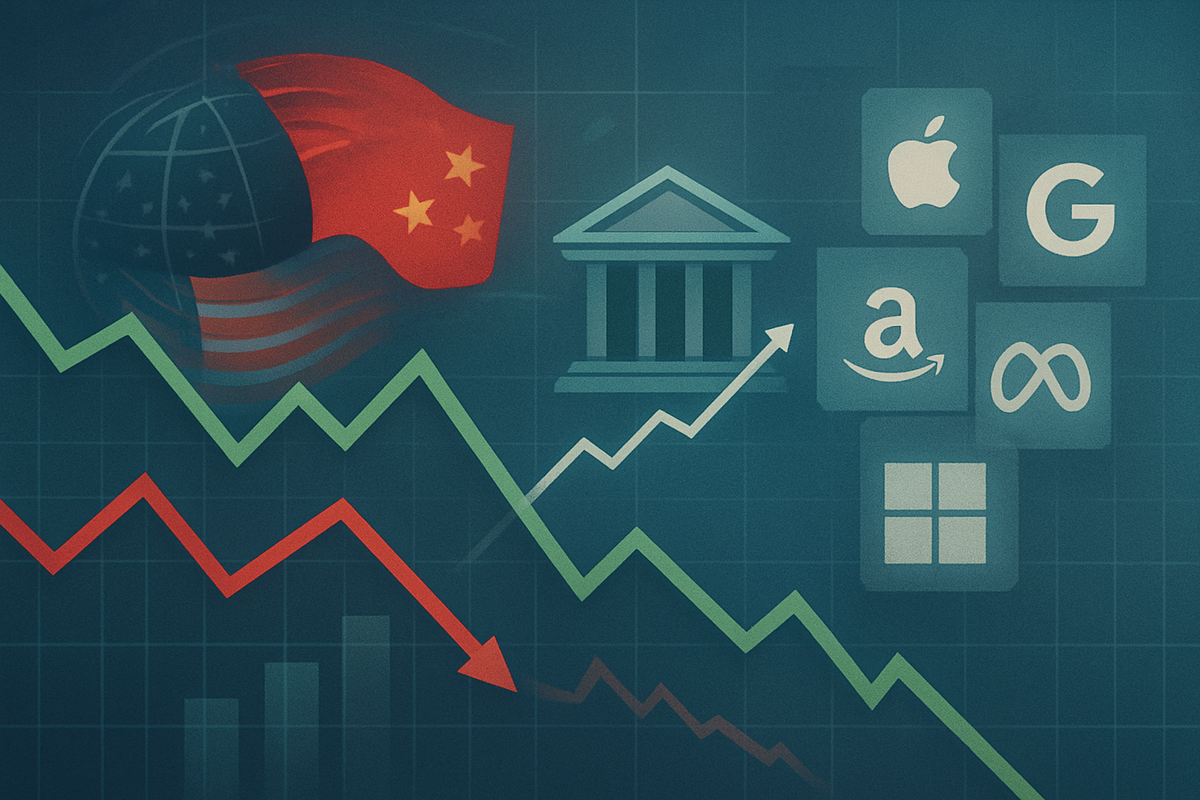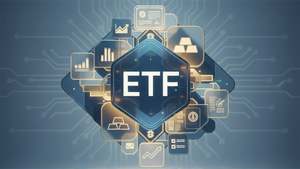
October 30, 2025 – Financial markets are navigating a tempestuous sea of geopolitical developments, monetary policy shifts, and crucial corporate earnings, resulting in a decidedly mixed performance across major U.S. stock indexes today. As investors digest the outcomes of a high-stakes trade meeting between President Trump and Chinese President Xi Jinping, a cautious warning from Federal Reserve Chair Jerome Powell, and a wave of mixed big tech results, all eyes are now firmly fixed on the impending earnings reports from tech titans Apple and Amazon after market close.
The confluence of these significant events has created a volatile trading environment, pushing the Dow Jones Industrial Average (DJIA) to modest gains while the tech-heavy Nasdaq Composite and the broader S&P 500 have retreated. This divergence underscores a period of heightened uncertainty, where market participants are sifting through a complex narrative to discern the true direction of the economy and corporate profitability.
A Whirlwind of Catalysts: Trade Talks, Fed Caution, and Tech Earnings
The past 48 hours have been nothing short of a financial market marathon, packed with events that could shape the economic landscape for months to come.
On Thursday, October 30, 2025, a highly anticipated meeting between then-President Donald Trump and Chinese President Xi Jinping took place on the sidelines of the Asia Pacific Economic Cooperation (APEC) summit in Seoul, South Korea. President Trump hailed the discussions as "amazing," giving them a "12 out of 10" rating, which initially injected a dose of optimism into the market. Key agreements reportedly included a commitment to reduce tariffs on China, China's pledge to resume significant purchases of U.S. agricultural products like soybeans, and a U.S. reduction of tariffs on fentanyl-related Chinese goods. However, despite the positive rhetoric, some analysts were quick to temper expectations, characterizing the outcomes as "small gestures instead of a grand bargain." This cautious interpretation contributed to the somewhat choppy market reaction, as investors awaited further details and assessed the true depth of the trade détente. The underlying trade tensions, which have periodically flared between the two economic superpowers, continue to be a significant overhang.
Adding another layer of complexity, Federal Reserve Chair Jerome Powell delivered a sobering warning on Wednesday, October 29, 2025, following the widely expected quarter-point interest rate cut. While the rate cut itself was a relief to some, Powell's subsequent remarks that a further rate cut in December was "not a foregone conclusion" and "far from it" caught many off guard. This "hawkish tone" from the Fed Chair immediately dampened market expectations for aggressive monetary easing, causing Treasury yields to rise and trimming earlier market advances. Powell's comments signaled a potential internal struggle within the central bank regarding the future path of monetary policy, suggesting that the era of readily available rate cuts might be drawing to a close, at least for the immediate future.
Meanwhile, the earnings season for "Magnificent Seven" technology companies has delivered a mixed bag of results, setting a cautious tone ahead of today's marquee reports. Alphabet (NASDAQ: GOOGL), the parent company of Google, saw its shares surge by approximately 5-7% after reporting stronger-than-expected results and surpassing an unprecedented $100 billion in quarterly revenue for the first time. In contrast, Meta Platforms (NASDAQ: META) experienced a significant drop in its stock, ranging from 7% to 12%, as investors reacted negatively to its ambitious, and costly, spending plans for artificial intelligence and weaker-than-expected earnings per share. Microsoft (NASDAQ: MSFT) also saw its shares fall by about 2.5-4%, despite reporting robust profit and revenue, due to concerns about slower growth in its Azure cloud computing unit and increased investment costs. These divergent performances highlight the intense scrutiny investors are placing on tech giants' ability to translate massive AI investments into tangible returns.
Companies on the Cusp: Winners, Losers, and the Road Ahead
The day's events hold significant implications for a wide array of public companies, with some poised to benefit and others facing headwinds.
The partial resolution of trade tensions between the U.S. and China could be a boon for multinational corporations with significant exposure to both markets. Companies in the agricultural sector, for instance, stand to gain from China's renewed commitment to purchase U.S. farm products. Technology companies, particularly those reliant on global supply chains or with substantial sales in China, could see some relief from tariff pressures. However, the "small gestures" nature of the agreement means that the broader uncertainty around global trade policy persists, potentially limiting long-term investment and expansion plans for companies like Apple (NASDAQ: AAPL), which heavily relies on Chinese manufacturing and consumer markets.
Jerome Powell's cautious stance on future rate cuts could impact growth-oriented companies, particularly those in the technology sector, which often benefit from lower borrowing costs and easier access to capital. A higher-for-longer interest rate environment could increase the cost of capital, potentially slowing down aggressive expansion plans or making future profitability less attractive. Financial institutions, on the other hand, might see some benefit from a steeper yield curve if short-term rates remain stable while long-term rates rise, potentially improving their net interest margins.
The mixed big tech earnings have already created clear winners and losers. Alphabet (NASDAQ: GOOGL) demonstrated its robust advertising business and continued dominance, reassuring investors. However, Meta Platforms (NASDAQ: META) and Microsoft (NASDAQ: MSFT) faced skepticism regarding their AI spending and cloud growth, respectively. This sets a critical precedent for Apple (NASDAQ: AAPL) and Amazon (NASDAQ: AMZN), whose earnings are due after market close. For Apple, investors will be keen to see how iPhone sales are holding up in a competitive global market, and whether its services division continues to drive growth. Its outlook on the crucial Chinese market, especially in light of the trade talks, will be paramount. Amazon (NASDAQ: AMZN) faces scrutiny on its e-commerce profitability, the continued growth of Amazon Web Services (AWS), and the impact of its recent announcement of its largest-ever layoffs, affecting up to 30,000 corporate workers. The market will be looking for clear signals on how these companies plan to navigate AI investments, supply chain challenges, and consumer spending trends.
Wider Significance: A Shifting Global Economic Landscape
These intertwined events are not isolated incidents but rather critical threads in the tapestry of a shifting global economic landscape. The U.S.-China trade dynamics, even with minor agreements, continue to highlight the ongoing strategic competition between the world's two largest economies. The implications extend beyond tariffs, touching upon technological supremacy, intellectual property rights, and geopolitical influence. Any significant shift in this relationship has ripple effects on global supply chains, commodity prices, and currency valuations, affecting virtually every industry from manufacturing to retail.
The Federal Reserve's monetary policy, under Chair Powell, remains a pivotal force shaping market sentiment and economic activity. The cautious "hawkish" tone suggests a central bank that is increasingly data-dependent and perhaps more wary of reigniting inflation than previously assumed. This stance could signal a broader trend of central banks around the world adopting a more conservative approach to monetary easing, potentially leading to a higher cost of capital globally. Such a policy shift could temper asset valuations, particularly in speculative sectors, and necessitate a re-evaluation of growth strategies for many businesses. Historically, periods of tightening monetary policy have often preceded economic slowdowns, making Powell's words particularly significant.
The big tech earnings season, especially the focus on AI investments, underscores a profound technological transformation. While the "Magnificent Seven" continue to dominate, their ability to efficiently deploy capital into AI and demonstrate clear returns will dictate their future leadership. The mixed reactions to Meta and Microsoft's results suggest that investors are no longer simply rewarding AI enthusiasm but demanding concrete pathways to profitability. This trend could lead to a consolidation in the AI space, favoring companies with robust balance sheets and clear strategic visions. Regulatory scrutiny on big tech, concerning market dominance, data privacy, and AI ethics, also remains a persistent backdrop, potentially influencing future business models and growth trajectories.
What Comes Next: Navigating Uncertainty
The immediate future hinges significantly on the earnings reports from Apple (NASDAQ: AAPL) and Amazon (NASDAQ: AMZN) this evening. Their performance and forward guidance will undoubtedly set the tone for the market in the short term, potentially confirming or contradicting the trends seen from their tech peers. Strong results could re-energize the broader market, particularly the technology sector, while disappointments could exacerbate current anxieties and lead to further sell-offs.
In the medium to long term, investors will be closely watching for further developments in U.S.-China trade relations. While today's meeting offered some relief, a comprehensive and lasting trade agreement remains elusive. Any escalation or de-escalation of trade tensions will continue to dictate market sentiment and corporate strategy. Companies may need to consider strategic pivots, such as diversifying supply chains or re-evaluating market access strategies, to mitigate geopolitical risks.
On the monetary policy front, the market will be dissecting every word from Federal Reserve officials for clues about future interest rate decisions. The prospect of "higher for longer" rates could force companies to adapt by focusing on cost efficiencies, strengthening balance sheets, and prioritizing projects with immediate returns. Market opportunities may emerge in sectors that are less sensitive to interest rate fluctuations or those that can demonstrate resilient growth in a tighter monetary environment. Potential scenarios range from a continued "soft landing" if the Fed manages to cool inflation without triggering a recession, to a more challenging environment if policy becomes too restrictive.
Wrap-Up: A Market at a Crossroads
Today's mixed market performance is a clear reflection of a financial landscape at a crossroads, influenced by a complex interplay of trade diplomacy, central bank caution, and the evolving narrative of big tech. The "small gestures" from the Trump-Xi trade meeting offer a fragile hope for de-escalation, but the underlying tensions persist. Federal Reserve Chair Powell's hawkish tone signals a potentially less accommodative monetary policy, challenging assumptions of continuous rate cuts. Meanwhile, the mixed earnings from tech giants underscore that even the most dominant companies must now prove the profitability of their ambitious AI investments.
Moving forward, investors should remain vigilant. The immediate aftermath of Apple and Amazon's earnings will provide critical insights into consumer spending, cloud computing growth, and the overall health of the technology sector. Beyond that, the ongoing evolution of U.S.-China trade relations and the Federal Reserve's future policy decisions will be paramount. Watching for consistent data on inflation, employment, and corporate earnings will be key indicators in the coming months to assess market direction and identify resilient investment opportunities in this dynamic environment.
This content is intended for informational purposes only and is not financial advice





